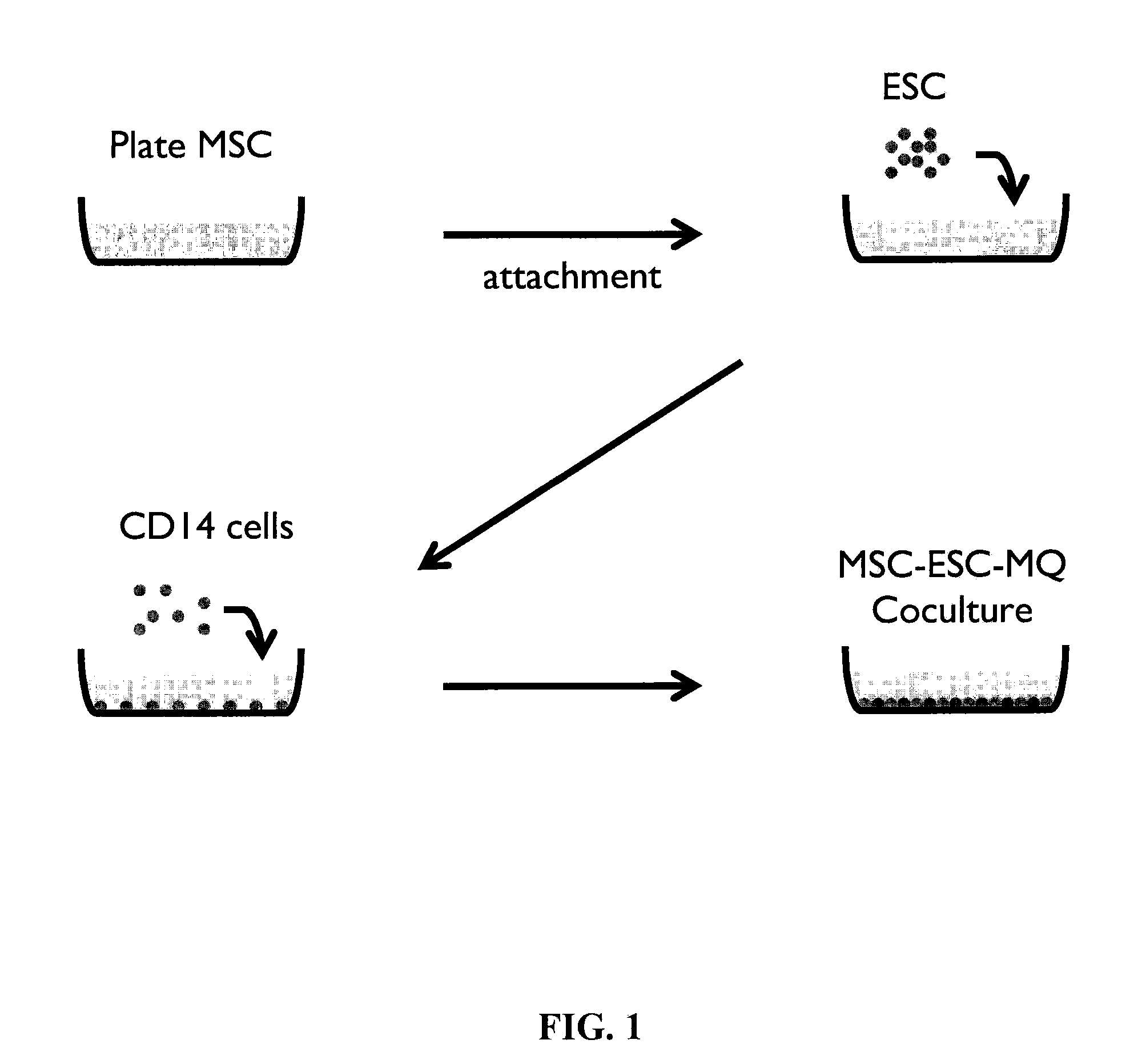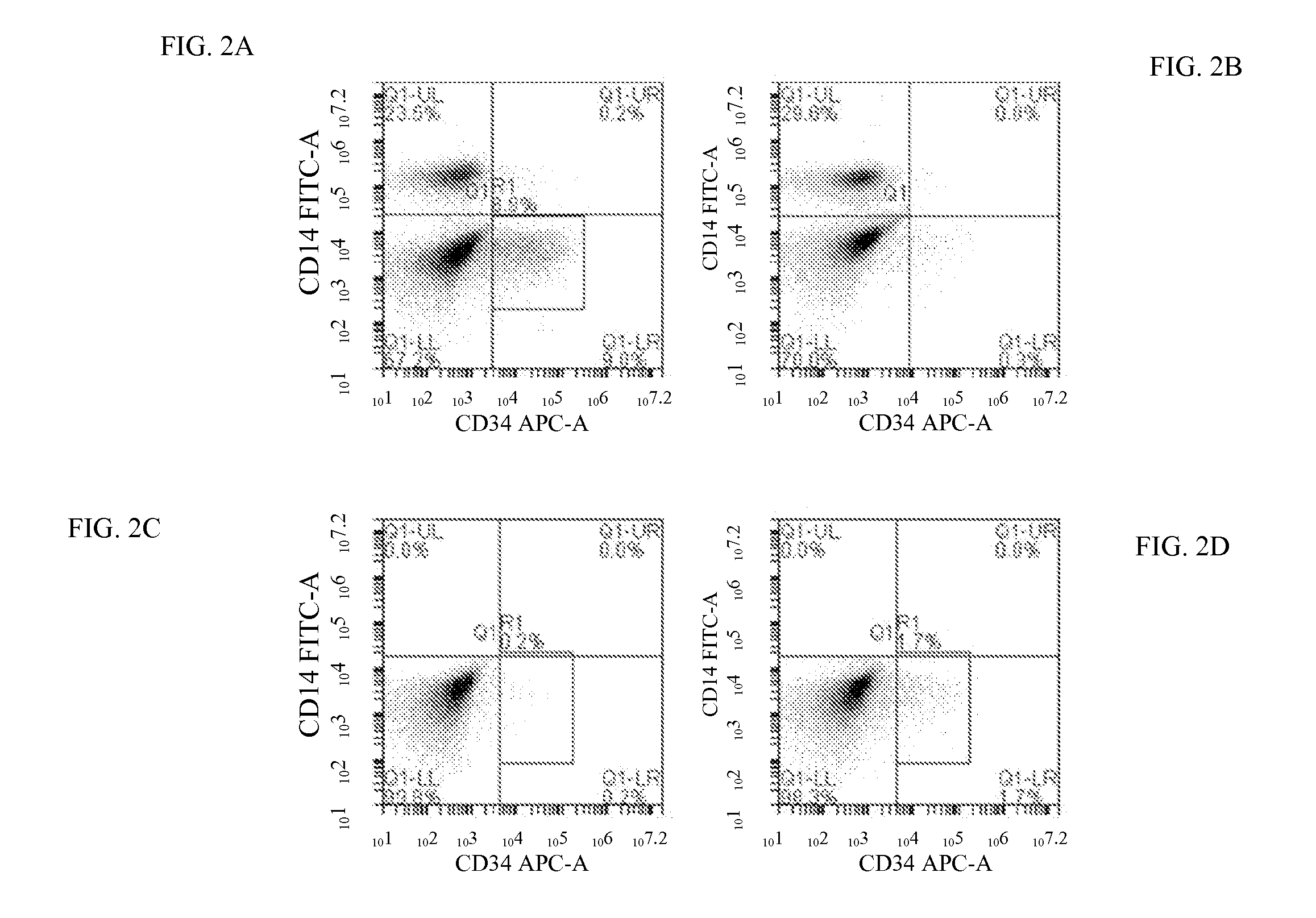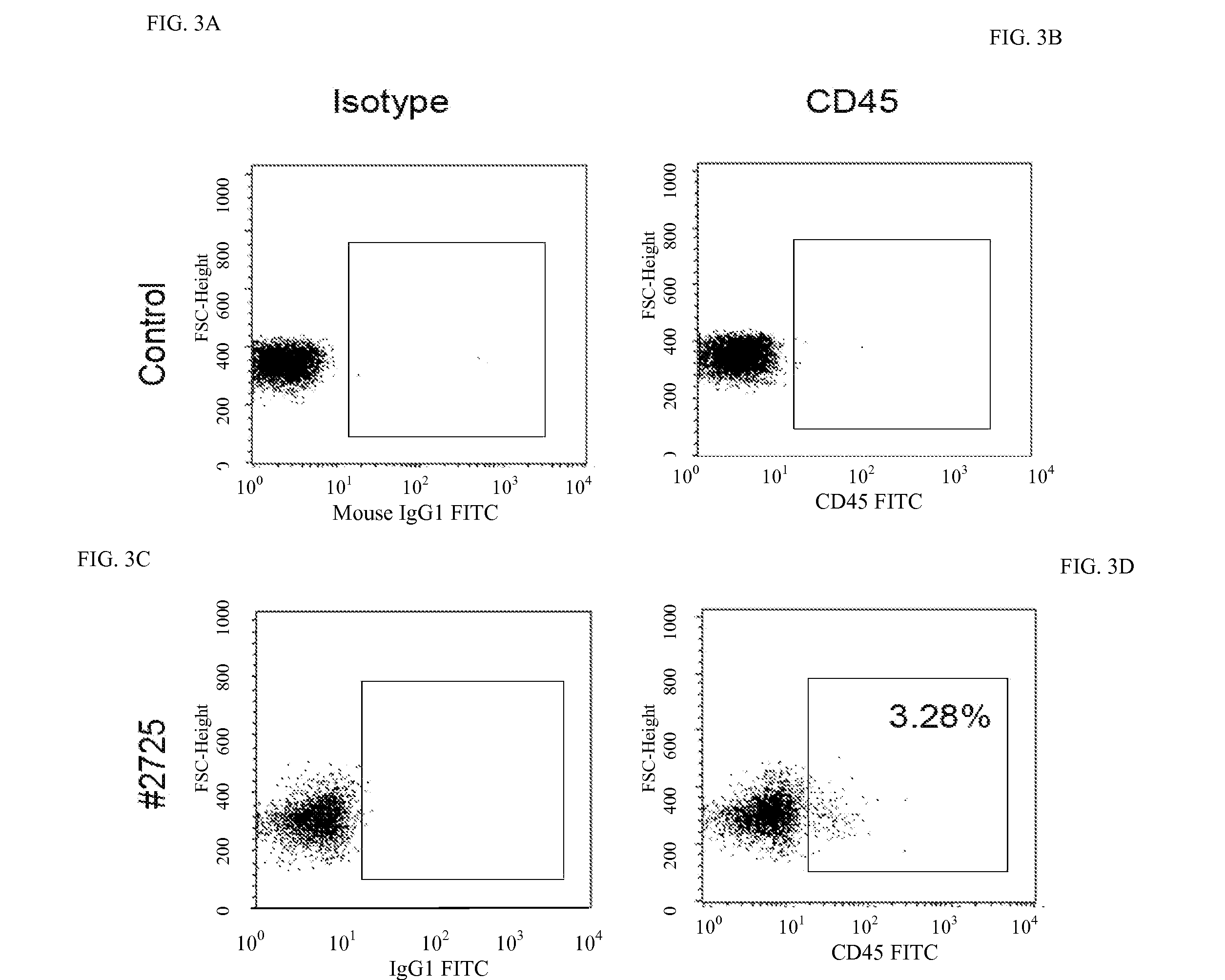Xeno-free generation of tissue-specific progenitor cells
a tissue-specific progenitor cell, xeno-free technology, applied in the direction of skeletal/connective tissue cells, instruments, drug compositions, etc., can solve the problems of limited use, inability to isolate or produce sufficient numbers of tissue-specific progenitor cells, and hampered clinical us
- Summary
- Abstract
- Description
- Claims
- Application Information
AI Technical Summary
Benefits of technology
Problems solved by technology
Method used
Image
Examples
example 1
Isolation of Human Monocytes and Mesenchymal Stem Cells
[0060]All protocols were approved by the Health Sciences Institutional Review Board of University of Wisconsin-Madison School of Medicine and Public Health.
[0061]Monocytes were derived from peripheral blood of human volunteers. Monocytes were isolated from human peripheral blood using magnetic bead separation according to manufacturers' instructions, briefly described as follows. Peripheral blood mononuclear cells were isolated from the blood of healthy volunteers by density gradient separation using Percoll (GE Healthcare Bio-sciences, Piscataway, N.J., USA). Contaminating red blood cells were lysed by incubating the mononuclear cells in ACK lysis buffer for 3 minutes, followed by a wash in phosphate buffered saline (PBS). To reduce platelet contamination, the cells were centrifuged at 700 rpm for 15 minutes. The resulting cell pellets were resuspended and incubated with MicroBeads conjugated to anti-human CD14 antibodies (Milt...
example 2
Bone Marrow-Derived MSCs and Macrophages Stimulate Differentiation of hES Cells Into CD34+ Cells In Vitro
[0063]Cells
[0064]Monocytes and MSCs were isolated essentially as described in Example 1. The Embryonic stem cell (ESC) line WA01 was supplied from WiCell Institute. ESCs were maintained on Matrigel™-coated plates (BD Biosciences, San Jose, Calif.) in TeSR media (WiCell, Madison, Wis.) according to standard protocol published by WiCell Institute (Ludwig et al. Nat. Methods 3(8):637-646 (2006), incorporated herein by reference as if set forth in its entirety). Briefly, ESCs cultured on Matrigel™ were treated with 1 mg / ml dispase (Invitrogen, Carlsbad, Calif.) for 7 minutes (5 minutes for xeno-free matrix cultured ESC). Cells were washed with DMEM / F12 three times and were collected by scraping with a glass pipette. The harvested cells were gently pipetted to dissociate large colonies and were added to Matrigel™-coated plates for expansion.
[0065]MSC-ESC Co-Culture
[0066]MSCs were plat...
example 3
Tissue-Specific Progenitor Cell Engraftment In Vivo
[0082]Cells
[0083]Cells were isolated and co-cultured essentially as described in Example s 1 and 2. CD34+ cells were isolated from ESC-MSC-Monocyte / Macrophage co-cultures using magnetic bead-based separation to enrich tissue progenitor cells.
[0084]Engraftment
[0085]To determine if the CD34+ cells isolated from MSC-pluripotent cell-CD14+ cell co-cultures can be engrafted and, subsequently, reconstitute a hematopoietic system, the pre-immune fetal sheep model was used. The fetal sheep model can be used to analyze multi-organ engraftment of human cells that are introduced in-utero prior to the development of the fetal immune system. Successful engraftment within the resulting human / sheep hematopoietic chimeras can be analyzed after birth. The engraftment was conducted essentially as described by Narayan et al., Blood 107:2180 (2005), incorporated herein by reference as if set forth in its entirety. On gestation day 61, three animals wer...
PUM
 Login to View More
Login to View More Abstract
Description
Claims
Application Information
 Login to View More
Login to View More - R&D
- Intellectual Property
- Life Sciences
- Materials
- Tech Scout
- Unparalleled Data Quality
- Higher Quality Content
- 60% Fewer Hallucinations
Browse by: Latest US Patents, China's latest patents, Technical Efficacy Thesaurus, Application Domain, Technology Topic, Popular Technical Reports.
© 2025 PatSnap. All rights reserved.Legal|Privacy policy|Modern Slavery Act Transparency Statement|Sitemap|About US| Contact US: help@patsnap.com



